Paola Paronetto’s vibrant collaboration with Veuve Clicquot puts a new spin on the bottle
Ceramic artist Paola Paronetto's take on packaging for Veuve Clicquot is a multi-hued marvel. We visit the artist in her Porcia studio to discuss the collection of six gift boxes and limited-edition artwork

Paola Paronetto rarely welcomes visitors to her workshop in Porcia, a small town in the north-western Italian region of Friuli-Venezia Giulia, but, to mark her collaboration with Veuve Clicquot, she happily makes an exception for Wallpaper*.
The project, which coincides with the champagne house’s 250th anniversary, sees the ceramic artist create the case and bottle for the newly released 2015 vintage of La Grande Dame, Veuve Clicquot’s premium cuvée, designed in homage to the brand’s leader in 1805 Barbe Nicole Ponsardin (known as Madame Clicquot). The new vintage will be available in Europe in summer 2023, following its initial launch in the US in November 2022.

Paola Paronetto at work in her studio
For the launch of La Grande Dame 2012 in 2020, Veuve Clicquot had called on Japanese artist Yayoi Kusama, who adorned the champagne bottle and case with her distinctive polka dots and flower motifs. Anyone familiar with Paronetto’s detailed artworks will recognise her interpretation just as easily.
‘La Grande Dame embodies Veuve Clicquot’s exceptional savoir-faire as well as our love of pinot noir,’ says Jean-Marc Gallot, president and CEO of Veuve Clicquot. ‘For this new vintage, we are honoured to collaborate with Paola Paronetto. A master of colour, she has created a new collection of six gift boxes in hues from her unique personal palette of more than 86 shades. Steeped in emotion, optimism and commitment, the whole is a symphony of colours that harmoniously blend together.’

A self-taught artist, Paronetto is known for creating ceramic works with seemingly fragile forms and proportions that appear to be made of paper. ‘My first encounter with ceramics occurred when I was 18 years old, when an Umbrian maestro came to my town and I joined his course. It was a revelation. I fell in love with clay, a malleable, soft material that was difficult to tame but immediately captivated me.’
She entered the world of ceramic art at a time when it was rather set in its ways: ‘There was a sort of rule among ceramists that one had to work on specific shapes or glazes,’ she says. ‘Over time, I became frustrated and felt the need to push those boundaries.’ Her encounter with paper clay in 2000 was a game changer. ‘I had to work hard to find my personal recipe and solutions to keep objects standing, to convey an image of movement and lightness, something not immediately associated with ceramics.’

Gift boxes designed by Paola Paronetto for Veuve Clicquot La Grande Dame 2015
Made by hand, using a lengthy and partially secret method that involves the addition of paper pulp to a clay mixture, her pieces are delicate but structurally sound. They are available in textural variants inspired by nature – Cartoccio (husk), Liscio (smooth), Corteccia (bark), Rete (net) – and because they are opaque rather than shiny, the pieces absorb light and change colour as the day progresses, making them appear to be in motion rather than static. While her output ranges from vases to lamps, Paronetto is most known for her bottles, so the project resonated with her. ‘I immediately saw this connection with Veuve Clicquot, and had the idea to make bottle-shaped boxes. Due to a desire to avoid any paper waste and make the packaging sustainable, we chose a more traditional champagne case with a texture similar to the Cartoccio bottle, whose lines generate distinct light and colour effects.’
Wallpaper* Newsletter
Receive our daily digest of inspiration, escapism and design stories from around the world direct to your inbox.

Works on display in Paola Paronetto's studio
The visit to her studio begins with her office, which features shelves loaded with pieces from her collections (‘I love seeing my pieces together as a tribute to the theme of being together, as happens in human relationships’). From here, a corridor lined with plants and equally packed shelves leads to the kiln room, filled with white works-in-progress, brushes, clay and water bowls. The connection between the textures and palette of Paronetto’s paper clay creations and those of La Grande Dame is clear when the two are placed side by side: ‘My ceramics usually look like paper, and the champagne cases reflect my pieces. But in this case, we chose to use very refined papers, tailor made and completely sustainable.’
Paronetto says her interpretation of La Grande Dame 2015 is imbued with a message of optimism and embodies the importance of female empowerment: ‘Madame Clicquot’s story moved me because of her strength, tenacity and willingness to innovate,’ says Paronetto, referring to the hurdles the female entrepreneur had to overcome as a young widow in an industry dominated by men. ‘It must have been difficult, but she chose to pursue her vision.’ The champagne house and the artist also share a connection to nature: ‘Veuve Clicquot works with vineyards, so is always involved with nature and the seasons,’ says Paronetto. ‘In my daily work, I must adjust to the seasons, climate and light.’

A bottle designed by Paronetto for Veuve Clicquot La Grande Dame 2015
For the collaboration, Paronetto used the iconic Veuve Clicquot yellow as a starting point, and expanded the palette to include six nature-inspired shades for the boxes that mimic her paper clay technique, realised in recyclable packaging. ‘We knew that the label would be the focal point, and I worked with colours that would go well with a yellow, like the sun, the centre of everything,’ adds Paronetto. ‘I placed it next to the sky with a pair of blues, a green that can’t be missed with its connection to nature, a lilac to bring a feminine element, as well as a pink, in the future, for the rosé.’
Paronetto’s collaboration with Veuve Clicquot has also resulted in a limited-edition artwork, a composition of three giant bottles, titled Giganti Monumentali. This will be shown as part of ‘Solaire Culture’, a travelling exhibition that kicked off in Tokyo and Los Angeles before hitting London in May 2023. The show features a series of contemporary female artists that have created works inspired by Veuve Clicquot’s heritage and ethos, and includes the likes of Kusama and Sheila Hicks. The commission led Paronetto to push boundaries: ‘The giant bottles are 1.35m tall. My desire was to create taller pieces, even for outdoor use, but I was a long way from achieving that goal, at least with paper clay,’ she says. ‘Then I met an Italian company that works with sheet metal and metal prototypes, and we started thinking about a group of bottles ranging from 4-6m.’ These were unveiled for the first time for the launch of La Grande Dame 2015 during Salone del Mobile.

Installation view of Veuve Clicquot 'Solaire Culture' exhibition, in Tokyo, 2022. The exhibition will travel to London's Piccadilly Circus from 12 May - 6 June 2023 and will feature an area dedicated to Paola Paronetto's collaboration with the Maison
La Grande Dame 2015, £170, by Paola Paronetto, for Veuve Clicquot. Paronetto’s artwork will feature in the exhibition ‘Solaire Culture’, which celebrates 250 years of Veuve Clicquot and will be on show in London from 12 May-6 June 2023, solaireculture.veuveclicquot.com,
veuveclicquot.com, paolaparonetto.com
Cristina Kiran Piotti is an Italian-Indian freelance journalist. After completing her studies in journalism in Milan, she pursued a master's degree in the economic relations between Italy and India at the Ca' Foscari Challenge School in Venice. She splits her time between Milan and Mumbai and, since 2008, she has concentrated her work mostly on design, current affairs, and culture stories, often drawing on her enduring passion for geopolitics. She writes for several publications in both English and Italian, and she is a consultant for communication firms and publishing houses.
-
 RIBA House of the Year 2024: browse the shortlist and pick your favourite
RIBA House of the Year 2024: browse the shortlist and pick your favouriteThe RIBA House of the Year 2024 shortlist is out, celebrating homes across the UK: it's time to place your bets. Which will win the top gong?
By Ellie Stathaki Published
-
 The Nothing Phone (2a) Plus Community Edition taps into the brand's creative followers
The Nothing Phone (2a) Plus Community Edition taps into the brand's creative followersThe unconventional features of Nothing Phone (2a)’s new limited edition come from a community-driven project to reshape the style and ethos of the smartphone
By Jonathan Bell Published
-
 What is the sound of Stone Island? A new musical project helps you find out
What is the sound of Stone Island? A new musical project helps you find outStone Island Sound is a new, evolving music project from the Italian label, seeing contributions from John Glacier, Yaeji and more across playlists and live performances
By Jack Moss Published
-
 Genesis Belanger is seduced by the real and the fake in London
Genesis Belanger is seduced by the real and the fake in LondonSculptor Genesis Belanger’s solo show, ‘In the Right Conditions We Are Indistinguishable’, is open at Pace, London
By Emily Steer Published
-
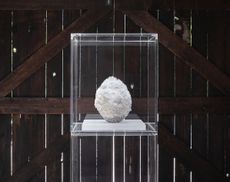 Japanese ceramicist Eriko Inazaki wins 2023 Loewe Foundation Craft Prize
Japanese ceramicist Eriko Inazaki wins 2023 Loewe Foundation Craft PrizeEriko Inazaki has been awarded the 2023 Loewe Foundation Craft Prize for her intricate ceramic work in a ceremony held at New York’s Noguchi Museum
By Pei-Ru Keh Published
-
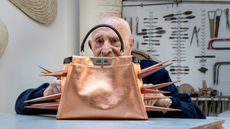 Sculptor Arnaldo Pomodoro transforms Fendi’s Rome HQ into a theatre of myth and magic
Sculptor Arnaldo Pomodoro transforms Fendi’s Rome HQ into a theatre of myth and magicFendi’s Roman HQ sets the scene for ‘Il Grande Teatro delle Civiltà’ a major show by Italian sculptor Arnaldo Pomodoro, who has also created a one-off edition of the house’s iconic Peekaboo bag. Read more in the July 2023 Issue of Wallpaper*, on newsstands 8 June
By Harriet Lloyd-Smith Published
-
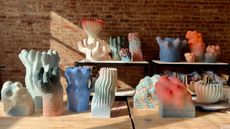 Janny Baek’s psychedelic ceramics are objects in flux
Janny Baek’s psychedelic ceramics are objects in fluxKorean-American architect and sculptor Janny Baek speaks about expressing ‘vibrancy, pleasure, and hope’ through her vivid ceramics, ahead of a major show at Culture Object, New York (on view until 20 May 2023)
By Pei-Ru Keh Published
-
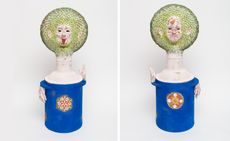 Ceramic artists: top trail-glazers breaking the mould
Ceramic artists: top trail-glazers breaking the mouldA way with clay: discover the contemporary ceramic artists firing up a new age for the medium
By Hannah Silver Last updated
-
 BMW Group’s new Designworks studio in Los Angeles has art and innovation at its heart
BMW Group’s new Designworks studio in Los Angeles has art and innovation at its heartWe visit the new BMW Group Designworks studio in Santa Monica, Los Angeles, to discover how this new hotbed for experimentation has art and innovation at its heart
By Harriet Lloyd-Smith Published
-
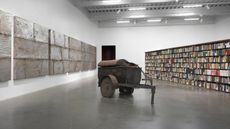 Theaster Gates’ New Museum exhibition meditates on mourning, materials and community
Theaster Gates’ New Museum exhibition meditates on mourning, materials and communityTheaster Gates talks about his first US museum show, ‘Young Lords and Their Traces’ at The New Museum (until 5 February 2023), a moving homage to the creative forces who came before
By Pei-Ru Keh Published
-
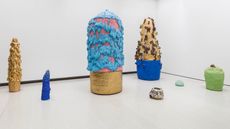 ‘Strange Clay’ review: a mucky, uncanny, visceral survey of ceramic art
‘Strange Clay’ review: a mucky, uncanny, visceral survey of ceramic artAt London’s Hayward Gallery, group show ‘Strange Clay: Ceramics in Contemporary Art’ sees ceramic artists explore the physical, psychological, political and power of their medium
By Emily Steer Published